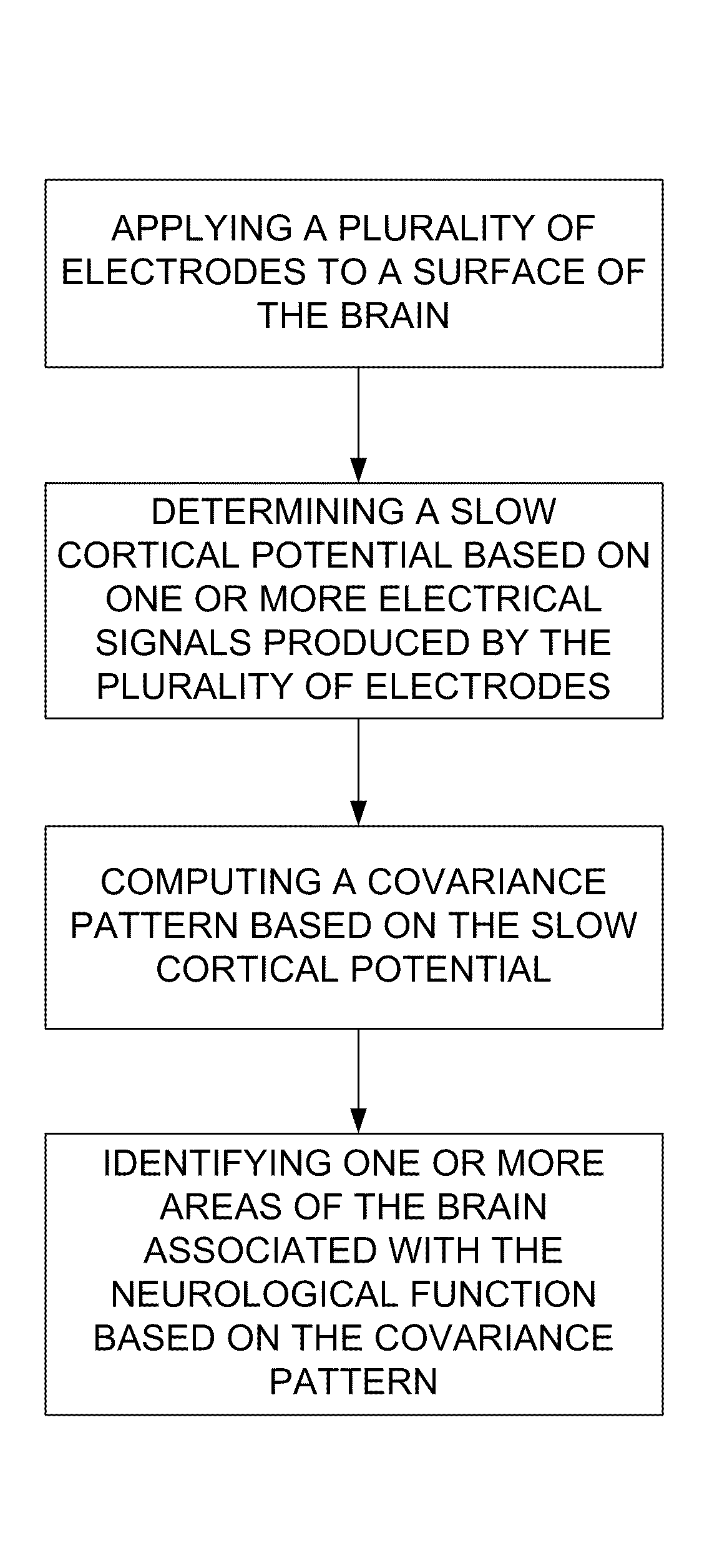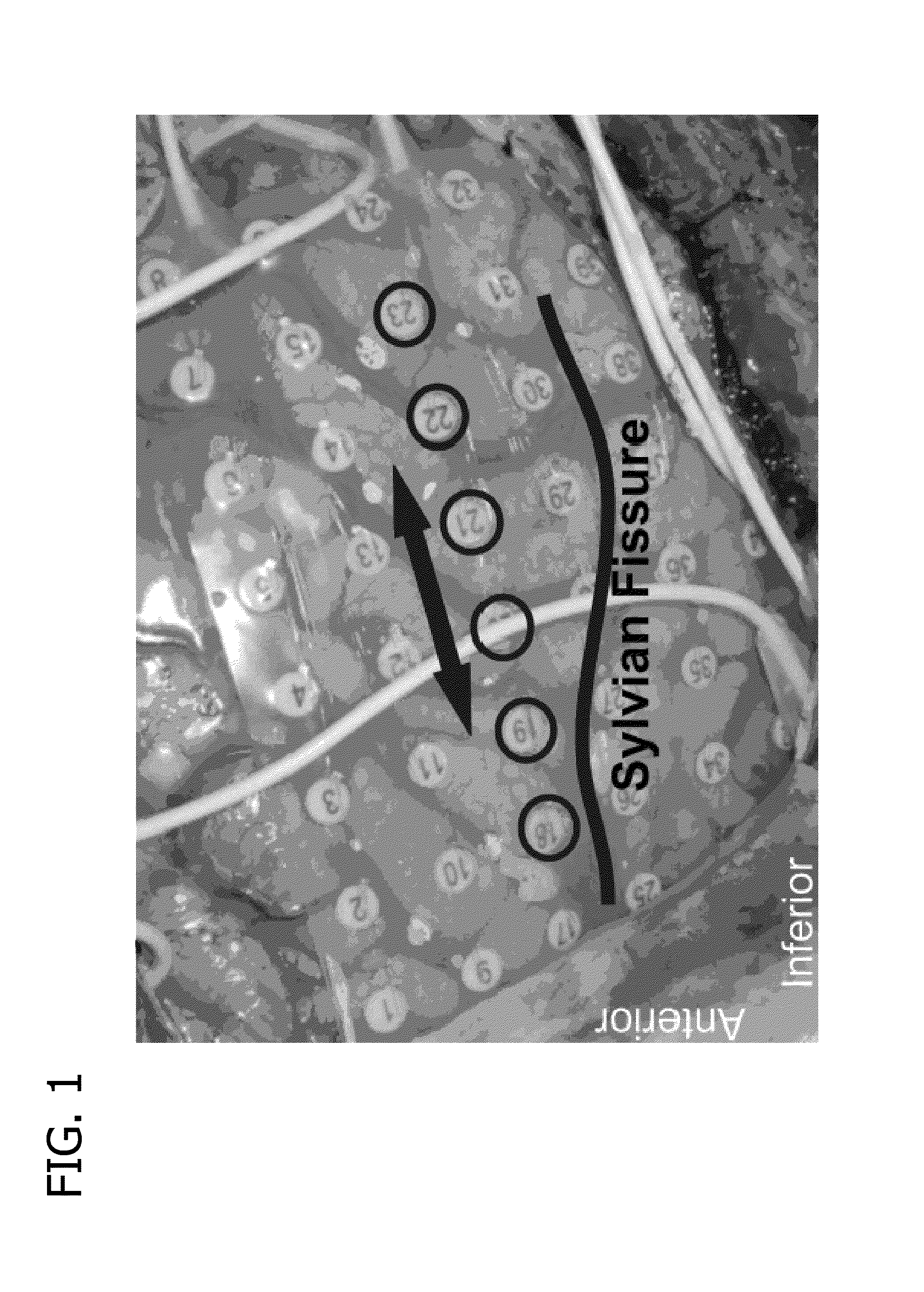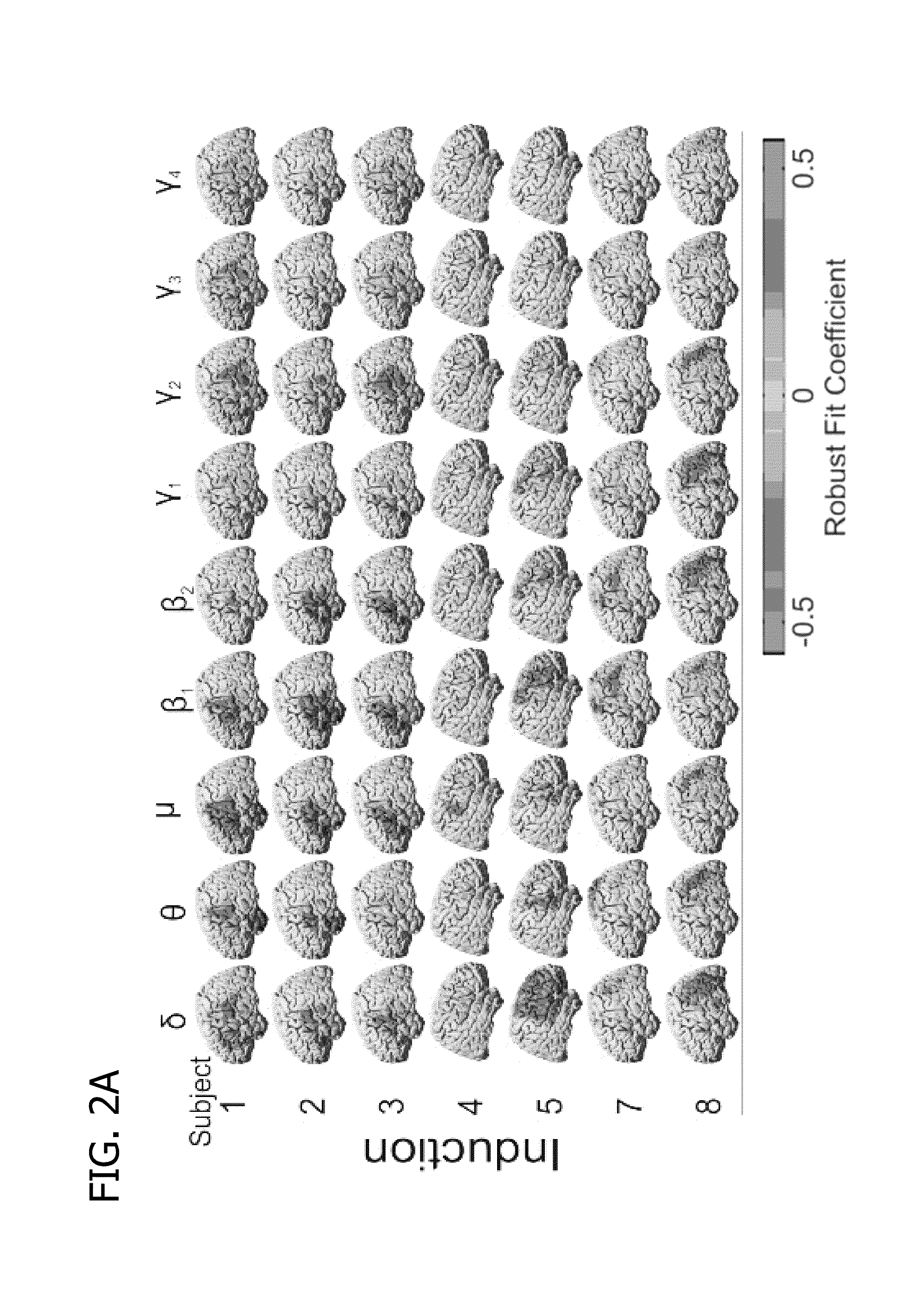Brain function mapping
a function mapping and brain technology, applied in the field of brain function mapping, can solve the problems of time-consuming mapping, requiring patient participation, and complicating the mapping of patients,
- Summary
- Abstract
- Description
- Claims
- Application Information
AI Technical Summary
Benefits of technology
Problems solved by technology
Method used
Image
Examples
Embodiment Construction
[0028]Embodiments described herein facilitate identifying one or more functional areas of a brain. In one embodiment, such identification is provided via a method by which, after recording electrical potentials directly from the exposed cortex of an anesthetized or otherwise unresponsive neurosurgical patient, the cortical areas responsible for speech and motor, and other networked functions in that individual are identified intraoperatively by analysis of the covariance patterns of the slow cortical potential (<0.5 Hz) which are stable and present regardless of the depth of anesthesia or degree of unresponsiveness.
[0029]Electrodes showing a consistent covariance pattern may be referred to as a network. The configuration of such networks may be used to determine the neurological function of one or more regions of the brain. The one or more areas of the brain associated with the neurological function that can be identified can be associated with one or more of the following: speech; ...
PUM
 Login to View More
Login to View More Abstract
Description
Claims
Application Information
 Login to View More
Login to View More - R&D
- Intellectual Property
- Life Sciences
- Materials
- Tech Scout
- Unparalleled Data Quality
- Higher Quality Content
- 60% Fewer Hallucinations
Browse by: Latest US Patents, China's latest patents, Technical Efficacy Thesaurus, Application Domain, Technology Topic, Popular Technical Reports.
© 2025 PatSnap. All rights reserved.Legal|Privacy policy|Modern Slavery Act Transparency Statement|Sitemap|About US| Contact US: help@patsnap.com



